
The pound sterling fell sharply against the US dollar during morning trading on Monday and hit a historic low on signals from the British Treasury about the likelihood of new tax breaks in addition to those announced last week.
The pound by 8:50 Moscow time fell by 2.6% and is $1.0570 compared to $1.0850 at the close of the previous session. Earlier in the day, the rate fell to $1.0327, which is the lowest level since 1971, when the UK switched to a decimal currency system.
Last week, UK Treasury Secretary Quasi Kwarteng announced a massive tax cut that will affect individuals and businesses and increase the budget deficit for the current fiscal year by more than 70 billion pounds.
“This government has only been in office for 19 days,” Kwarteng told the BBC on Sunday. “In the coming year, I would like to see people keep even more of their income because I believe the people of the UK will be the engine of the country’s economy.”
The market regarded this as a hint of new tax incentives, writes Bloomberg.
The ICE-calculated index, which shows the performance of the US dollar against six currencies (the euro, the Swiss franc, the yen, the Canadian dollar, the pound sterling and the Swedish krona), rose by 0.75%, exceeding 114 points for the first time since May 2020, according to Trading Economics .
The dollar is supported by the demand for defensive assets caused by fears of a global recession. In addition, currency traders point out that the Fed is tightening monetary policy at a faster pace than the rest of the world’s leading central banks.Pair pound / dollar has updated a historical low
The euro/dollar pair is trading at $0.9636 compared to $0.9690 at the close of the session last Friday, the euro loses about 0.6% and again updates the lows in two decades.
The rate of the American currency against the yen increases by 0.4% and amounts to 143.87 yen compared to 143.34 yen last Friday.
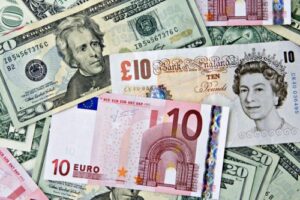
The euro and the pound sterling fell to multi-year lows against the US dollar in trading on Friday.
The ICE-calculated index showing the dynamics of the dollar against six currencies (the euro, the Swiss franc, the yen, the Canadian dollar, the pound sterling and the Swedish krona) soared to a record level, exceeding 112 points.
As of 15:10 Moscow time, it adds 0.78%, the broader WSJ Dollar Index – 0.74%.
The euro/dollar pair is trading at $0.9754 compared to $0.9838 at the close of the previous session. During the session, the euro exchange rate updated the minimum since 2002, dropping to $0.9737.
The pound sterling, meanwhile, hit a new low since 1985 against the dollar, dropping to $1.1020. By 15:10 Moscow time, the pound exchange rate is $1.1062.
The US currency is supported both by expectations of further tightening of the Federal Reserve System (Fed) policy, and by a general increase in demand for “safe haven” assets in the face of growing geopolitical tensions and forecasts of a global recession.
The euro remains under serious pressure due to growing fears of a protracted war on the territory of Ukraine after the announcement of partial mobilization in Russia, Market Watch notes.
The Eurozone Composite Purchasing Managers’ Index (PMI) fell to 48.2 in September from 48.9 in August, according to preliminary data from S&P Global. The index value indicates a decline in activity in the region for the third month in a row.
The Fed’s hawkish statements have prepared investors for a long cycle of rate hikes in the US, said Thomas Flury, an economist at UBS Global Wealth Management. “Given forecasts of a recession in Europe as a result of the intensifying energy crisis, the euro against the dollar will continue to decline.”
Meanwhile, Britain’s Chancellor of the Exchequer, Kwazi Kwarteng, presented the government’s new plan to the House of Commons on Friday, which would see massive tax cuts to support the ailing economy. The British Debt Management Office (DBO) raised its estimate of the state budget’s borrowing needs for the current fiscal year by almost 1.5 times after the tax cut announced on Friday.
The dollar rose to 142.73 yen against the yen from 142.37 yen at market close on Thursday.
The US dollar against the yuan rose 0.6% to 7.1193 yuan. During the session, it rose to the level of 7.1173 yuan, which is 1.8% higher than the reference rate set by the Chinese Central Bank on Friday. The People’s Bank of China allows exchange rate fluctuations of 2% from the reference in one direction or another. A deviation of more than 1.9% was last recorded in August 2015.
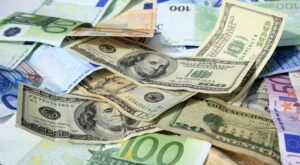
The dollar is weakly strengthening against major world currencies on Thursday morning, investors are waiting for the results of the September meeting of the European Central Bank and evaluate the statements of members of the leadership of the Federal Reserve System.
The ICE-calculated index, which shows the dynamics of the US dollar against six currencies (the euro, the Swiss franc, the yen, the Canadian dollar, the pound sterling and the Swedish krona), is down 0.1%, the broader WSJ Dollar Index is up 0.1%.
The euro / dollar at 8:56 Moscow time is trading at $0.9996 compared to $1.0008 at the close of the previous session, the euro is losing about 0.1%.
The European Central Bank (ECB) is expected to raise key interest rates following the results of the September meeting immediately by 75 basis points (bp). The ECB has only once raised its base rate so sharply – a few days after the launch of the euro in 1999, but then it was a short-term technical adjustment, the Financial Times notes. The results of the meeting will be announced at 15:15 Moscow time on Thursday.
“There are no doves left in the ECB, only moderate and radical hawks,” said Katarina Utermeul, chief economist for European markets at Allianz SE.
The exchange rate of the American currency against the yen rose by 0.15% to 144.04 yen.
The yen has been the main casualty of the dollar’s recent rally as the Japanese currency is particularly sensitive to rising US long-term government bond yields, Investing.com writes.
“Any attempts to return to the 140 yen/$1 level have been short-lived, and in recent days the pair hit 144 yen/$1 for the first time since 1998,” wrote OANDA Senior Analyst Craig Erlam. to the dollar.”
The yen is under pressure from more hawkish comments from the Fed. Thus, the vice-president of the US Central Bank, Leil Brainard, said the day before that the Fed would have to raise the base interest rate to levels at which there would be a slowdown in economic activity.
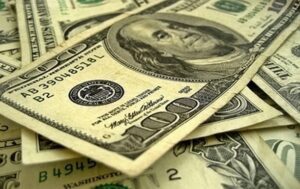
The US dollar is depreciating against the euro, pound sterling and yen after a two-day meeting of the Federal Reserve System (FRS).
As reported, the US Central Bank raised its base interest rate by 75 basis points (bp) for the second meeting in a row, to 2.25-2.5%, and signaled that it intends to continue tightening monetary policy.
Fed Chairman Jerome Powell said during a press conference after the meeting that the central bank is ready to accelerate the pace of rate hikes, if necessary, to curb inflation. At the same time, he noted that at some point the Fed will have to slow down the pace of rate hikes, as the US economy is weakening.
Powell also declined to predict what the rate hike could be at the next meeting, noting that the Fed would make decisions “from meeting to meeting.”
Market participants considered Powell’s statements less “hawkish” than expected, seeing in them a hint that the Fed will raise rates more slowly going forward, Dow Jones notes.
The dollar fell 0.8% against the euro on Wednesday, more than 1% against the pound and 0.25% against the yen.
As of 09:20 Moscow time on Thursday, the euro/dollar pair is trading at $1.0218 compared to $1.0198 at the close of the previous session. The pound rose to $1.2171 from $1.2156 the day before.
The cost of the US currency against the yen is 135.37 yen against 136.6 yen on Wednesday.
The ICE-calculated index, which shows the dynamics of the dollar against six currencies (the euro, the Swiss franc, the yen, the Canadian dollar, the pound sterling and the Swedish krona), is losing 0.32%, the broader WSJ Dollar Index – 0.31%.
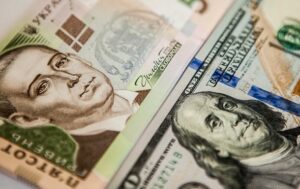
From 09:00 on July 21, 2022, the National Bank of Ukraine adjusted the official exchange rate of the hryvnia against the US dollar by 25% – from UAH 29.2549/$1 to UAH 36.5686/$1, taking into account changes in the fundamental characteristics of the Ukrainian economy during the war and strengthening of the US dollar against other currencies, according to a message on the NBU website.
“Such a step will increase the competitiveness of Ukrainian producers, bring together the exchange rate conditions for different business groups and the population and maintain the stability of the economy in a war,” the National Bank said.
He stressed that the official exchange rate of the hryvnia against the US dollar continues to be fixed.
“With the high uncertainty caused by the war, a fixed official exchange rate against the US dollar is the main anchor for stabilizing expectations and a key means of achieving the NBU’s priority goals. They are to ensure price and financial stability, which is an important condition for economic recovery,” the regulator explains its position.
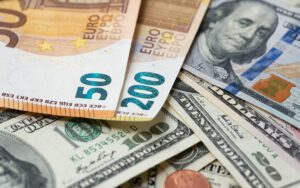
The euro exchange rate against the US dollar will fall to $0.90 in the next six months against the backdrop of the political crisis in Italy and the reduction in Russian gas supplies, 69% of MLIV Pulse poll participants believe.
In addition, only 16% of respondents believe that Europe will be able to avoid recession in the next six months, Bloomberg quoted the results of a survey of 792 respondents.
Political problems in the euro zone’s third-largest economy could also lead to a fragmentation of the bond market, investors say. Thus, 21% of respondents believe that the spread between the yields of 10-year government bonds in Italy and Germany may exceed 500 basis points, updating the maximum since 2012.
In general, 41% of participants in the survey, conducted among portfolio managers and private investors, expect the beginning of the debt crisis in the eurozone in the next six months.